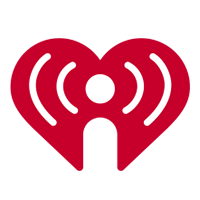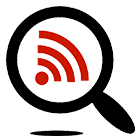The Holmes Archive of Electronic Music
Thom Holmes is your curator and guide to vintage electronic music recordings and audio experimentation. Drawing from his collection of vintage electronic music recordings spanning the years 1930-1985, each episode explores a topic or theme of historical interest. Holmes is the author of the book, Electronic and Experimental Music, sixth edition, 2020.
Episodes
Episodes


Saturday Apr 26, 2025
Chapter 28, Moog Analog Synthesizers, Part 2
Saturday Apr 26, 2025
Saturday Apr 26, 2025
Episode 169
Chapter 28, Moog Analog Synthesizers, Part 2. Works Recommended from my book, Electronic and Experimental Music
Welcome to the Archive of Electronic Music. This is Thom Holmes.
This podcast is produced as a companion to my book, Electronic and Experimental Music, published by Routledge. Each of these episodes corresponds to a chapter in the text and an associated list of recommended works, also called Listen in the text. They provide listening examples of vintage electronic works featured in the text.
The works themselves can be enjoyed without the book and I hope that they stand as a chronological survey of important works in the history of electronic music. Be sure to tune-in to other episodes of the podcast where we explore a wide range of electronic music in many styles and genres, all drawn from my archive of vintage recordings.
There is a complete playlist for this episode on the website for the podcast.
Let’s get started with the listening guide to Chapter 28, Moog Analog Synthesizers, Part 2 from my book Electronic and Experimental music.
Playlist: CLASSIC SYNTHESIZER ROCK— FROM TAPE COMPOSITION TO SYNTHESIZERS
Time
Track Time
Start
Introduction –Thom Holmes
01:34
00:00
1. The Beatles, “Tomorrow Never Knows” (1966). Tape loops and Lennon’s voice fed through the rotating Leslie speaker of a Hammond organ.
02:57
01:42
2. Spooky Tooth and Pierre Henry, “Have Mercy” (1969). Featured tape composition by the French composer of musique concrète as part of a collaborative rock opera.
07:55
04:40
3. Emerson, Lake, & Palmer, “Lucky Man” (1971). Featured the Moog Modular played by Keith Emerson; one of the first rock hits in which a Moog was the featured solo instrument.
04:39
12:34
4. Yes, “Roundabout” (1971). Featured the Minimoog, Mellotron, Hammond Organ and other electronic keyboards played by Rick Wakeman.
08:33
17:10
5. Elton John, “Funeral for a Friend/Love Lies Bleeding” (1973). Featured the ARP 2600 played by Dave Henschel.
11:10
25:42
6. David Bowie, “Speed of Light” (1977). Produced by Brian Eno. Used an EMS AKS synthesizer and Eventide H910 harmonizer for the electronic effects and sounds.
02:47
36:46
7. Gary Wright, “Touch and Gone” (1977). Used Polymoog, Clavinet, Oberheim, and Fender-Rhodes electronic keyboards.
03:58
39:32
8. Gary Numan, “Cars” (1979). Early synth-rock success using electronic keyboards without guitar. Multiple Polymoog synthesizers.
03:52
43:28
9. The Art of Noise, “(Who’s Afraid Of?) The Art of Noise” (1984). Art rock devised by Anne Dudley and Trevor Horn exploring the sampling capabilities of the Fairlight CMI.
04:23
47:20
10. Grace Jones, “Slave to the Rhythm” (1985). Featured the Synclavier programmed and played by Trevor Horn.
09:39
51:43
Additional opening, closing, and other incidental music by Thom Holmes.
My Books/eBooks: Electronic and Experimental Music, sixth edition, Routledge 2020. Also, Sound Art: Concepts and Practices, first edition, Routledge 2022.
See my companion blog that I write for the Bob Moog Foundation.
For a transcript, please see my blog, Noise and Notations.
Original music by Thom Holmes can be found on iTunes and Bandcamp.


Saturday Apr 26, 2025
Chapter 28, Moog Analog Synthesizers, Part 1
Saturday Apr 26, 2025
Saturday Apr 26, 2025
Episode 168
Chapter 28, Moog Analog Synthesizers, Part 1. Works Recommended from my book, Electronic and Experimental Music
Welcome to the Archive of Electronic Music. This is Thom Holmes.
This podcast is produced as a companion to my book, Electronic and Experimental Music, published by Routledge. Each of these episodes corresponds to a chapter in the text and an associated list of recommended works, also called Listen in the text. They provide listening examples of vintage electronic works featured in the text.
The works themselves can be enjoyed without the book and I hope that they stand as a chronological survey of important works in the history of electronic music. Be sure to tune-in to other episodes of the podcast where we explore a wide range of electronic music in many styles and genres, all drawn from my archive of vintage recordings.
There is a complete playlist for this episode on the website for the podcast.
Let’s get started with the listening guide to Chapter 28, Moog Analog Synthesizers, Part 1 from my book Electronic and Experimental music.
Playlist: EARLY MOOG RECORDINGS (BEFORE 1970)
Time
Track Time
Start
Introduction –Thom Holmes
01:32
00:00
1. Emil Richards and the New Sound Element, “Sapphire (September)” from Stones (1967). Paul Beaver played Moog and Clavinet on this album by jazz-pop mallet player Richards, who also contributed some synthesizer sounds.
02:21
01:44
2. Mort Garson, “Scorpio” (1967) from Zodiac Cosmic Sounds (1967). Mort Garson and Paul Beaver. Incorporated Moog sounds among it menagerie of instruments. Garson went on to produce many solo Moog projects.
02:53
04:04
3. Hal Blaine, “Kaleidoscope (March)” from Psychedelic Percussion(1967). Hal Blaine and Paul Beaver. Beaver provided Moog and other electronic treatments for this jazzy percussion album by drummer Blaine.
02:20
06:58
4. The Electric Flag, “Flash, Bam, Pow” from The Trip soundtrack (1967). Rock group The Electric Flag. Moog by Paul Beaver.
01:27
09:18
5. The Byrds, “Space Odyssey” (1968) from The Notorious Byrd Brothers (1968). Produced by Gary Usher who was acknowledged for having included the Moog on this rock album, with tracks such as, “Goin’ Back” (played by Paul Beaver), “Natural Harmony,” and unreleased track “Moog Raga.”
03:47
10:48
6. The Monkees, “Daily Nightly” from Pisces, Aquarius, Capricorn, and Jones Ltd. (1967). Moog effects provided by Micky Dolenz of the Monkees and Paul Beaver.
02:29
14:40
7. Jean Jacques Perrey and Gershon Kingsley, “The Savers,” a single taken from Kaleidoscopic Vibrations (1967). The first Moog album by this duo known for their electro-pop songs.
01:48
17:08
8. Wendy Carlos, “Chorale Prelude "Wachet Auf" from Switched-On Bach (1968). The most celebrated Moog album of all time and still the gold standard for Moog Modular performances.
03:34
18:54
9. Mike Melvoin, “Born to be Wild” from The Plastic Cow Goes Moooooog (1969). Moog programming by Paul Beaver and Bernie Krause.
03:03
22:28
10. Sagittarius, “Lend Me a Smile” from The Blue Marble (1969). This was a studio group headed by Gary Usher, producer of The Byrds, who used the Moog extensively on this rock album.
03:09
25:30
11. The Zeet Band, “Moogie Woogie” from the album Moogie Woogie(1969). Electronic boogie and blues by an ensemble including Paul Beaver, Erwin Helfer, Mark Naftalin, “Fastfingers” Finkelstein, and Norman Dayron.
02:43
28:40
Additional opening, closing, and other incidental music by Thom Holmes.
My Books/eBooks: Electronic and Experimental Music, sixth edition, Routledge 2020. Also, Sound Art: Concepts and Practices, first edition, Routledge 2022.
See my companion blog that I write for the Bob Moog Foundation.
For a transcript, please see my blog, Noise and Notations.
Original music by Thom Holmes can be found on iTunes and Bandcamp.


Wednesday Apr 16, 2025
Chapter 27, Computer Music (1971–2014)
Wednesday Apr 16, 2025
Wednesday Apr 16, 2025
Episode 167
Chapter 27, Computer Music (1971–2014). Works Recommended from my book, Electronic and Experimental Music
Welcome to the Archive of Electronic Music. This is Thom Holmes.
This podcast is produced as a companion to my book, Electronic and Experimental Music, published by Routledge. Each of these episodes corresponds to a chapter in the text and an associated list of recommended works, also called Listen in the text. They provide listening examples of vintage electronic works featured in the text.
The works themselves can be enjoyed without the book and I hope that they stand as a chronological survey of important works in the history of electronic music. Be sure to tune-in to other episodes of the podcast where we explore a wide range of electronic music in many styles and genres, all drawn from my archive of vintage recordings.
There is a complete playlist for this episode on the website for the podcast.
Let’s get started with the listening guide to Chapter 27, Computer Music (1971–2014) from my book Electronic and Experimental music.
Playlist: EARLY MUSIC FROM MICROPROCESSORS
Time
Track Time
Start
Introduction –Thom Holmes
01:36
00:00
1. David Behrman, “Figure in a Clearing” (1977). KIM- 1 computer- controlled harmonic changes for 33 electronic generators and accompanying cello.
19:10
01:40
2. Dorothy Siegel, “Rondo from Sonata in B flat for Clarinet and Piano” (by Wanhal) (1979). Realized using an Altair S- 100 microcomputer.
03:53
20:52
3. Larry Fast, “Artificial Intelligence” (1980). Music generated by a microcomputer self- composing program.
10:46
24:44
4. Laurie Spiegel, “A Harmonic Algorithm” (1981). Created on an Apple II computer with Mountain Hardware oscillator boards.
03:05
35:30
5. Nicolas Collins, “Little Spiders” (1982). For two microcomputers equipped with gestural sensing programs, that generated sounds based on analysis of keystrokes.
04:46
38:30
6. Gordon Mumma, “Than Particle” (1985). For computer percussion and a percussionist.
10:16
43:30
7. Morton Subotnick, “And the Butterflies Begin to Sing” (1988). For string quartet, bass, MIDI keyboard, and microcomputer.
06:38
53:50
8. John Bischoff, Mark Trayle, Tim Perkis, “Dovetail” (1989). Three microcomputer programs interact and respond to each other in real time.
05:04
01:00:30
9. Tim Perkis, “Wax Lips” (1992). Performed by The Hub, an electronic music ensemble networked by a Microcomputer.
04:37
01:05:32
10. Jin Hi Kim, “Digital Buddha” (2014), recorded live at the Metropolitan Museum of Art. Electric komungo, Jin Hi Kim; percussion, Gerry Hemingway; MAX/MSP programming, Alex Noyes. The world’s first electric komungo that his equipped with MIDI and controlled using MAX. The komungo is a traditional 6-string instrument from Korea.
12:33
01:10:08
Additional opening, closing, and other incidental music by Thom Holmes.
My Books/eBooks: Electronic and Experimental Music, sixth edition, Routledge 2020. Also, Sound Art: Concepts and Practices, first edition, Routledge 2022.
See my companion blog that I write for the Bob Moog Foundation.
For a transcript, please see my blog, Noise and Notations.
Original music by Thom Holmes can be found on iTunes and Bandcamp.


Thursday Apr 10, 2025
Chapter 26, Early Computer Music (1950–70)
Thursday Apr 10, 2025
Thursday Apr 10, 2025
Episode 166
Chapter 26, Early Computer Music (1950–70). Works Recommended from my book, Electronic and Experimental Music
Welcome to the Archive of Electronic Music. This is Thom Holmes.
This podcast is produced as a companion to my book, Electronic and Experimental Music, published by Routledge. Each of these episodes corresponds to a chapter in the text and an associated list of recommended works, also called Listen in the text. They provide listening examples of vintage electronic works featured in the text.
The works themselves can be enjoyed without the book and I hope that they stand as a chronological survey of important works in the history of electronic music. Be sure to tune-in to other episodes of the podcast where we explore a wide range of electronic music in many styles and genres, all drawn from my archive of vintage recordings.
There is a complete playlist for this episode on the website for the podcast.
Let’s get started with the listening guide to Chapter 26, Early Computer Music (1950–70). from my book Electronic and Experimental music.
Playlist: EARLY COMPUTER MUSIC (1950–70)
Time
Track Time
Start
Introduction –Thom Holmes
01:40
00:00
1. Tones from Australia, 1951. All produced using the CSIR Mark 1 computer built at the CSIR’s radio-physics division in Sydney. The computer had a speaker—or hooter—to signal when operations were completed. A clever programmer thought of manipulating the signal tones into a melody.
02:18
01:42
2. Alan Turing’s computer music. 1951. Recording made of tones generated by the mainframe computer at the Computing Machine Laboratory in Manchester, England. Snippets of the tunes God Save the King, Baa, Baa Black Sheep, and Glenn Miller’s swing classic In the Mood. Plus, the voices of computer lab members listening to the sound as it was recorded. Original acetate recording from 1951 restored by University of Canterbury composer Jason Long and Prof Jack Copeland.
01:55
02:36
3. Max Mathews, “Numerology” (1960). Introduced by a narrator. From the album Music From Mathematics, Bell Telephone Laboratories. While working at Bell Labs in telecommunications research, Max Mathews was one of the earliest computer engineers to use a general-purpose computer to program music and digitally synthesize musical sound. His programming language Music I allowed composers to design their own virtual instruments, a breakthrough during those pioneering days of computer music. “Numerology” was composed to demonstrate the various parameters, or building blocks, available to the composer using this programming language: vibrato (frequency modulation), attack and decay characteristics, glissando, tremolo (amplitude modulation), and the creation of new waveshapes.
02:49
04:38
4. John Robinson Pierce, “Beat Canon” (1960). Introduced by a narrator. From the album Music From Mathematics, Bell Telephone Laboratories. Played by IBM computer and direct to digital sound transducer.
00:52
07:28
5. James Tenney, “Noise Study” (1961). So named because “each of the ‘instruments’ used in this piece includes a noise-generator.”
04:24
08:20
6. “Bicycle Built For Two (Accompanied)” (1963) From the demonstration record Computer Speech - Hee Saw Dhuh Kaet (He Saw The Cat), produced by Bell Laboratories. This recording contains samples of synthesized speech–speech artificially constructed from the basic building blocks of the English language.
01:17
12:42
7. Lejaren Hiller, “Computer Cantata, Prologue to Strophe III” (1963). From the University Of Illinois. This work employed direct computer synthesis using an IBM 7094 mainframe computer and the Musicomp programming language.
05:41
14:00
8. J. K. Randall, “Lyric Variations For Violin And Computer” (1965-1968). J. K. Randall’s piece had a complex section that pushed the limits of computer processing power at the time. Although the section consisted of only 12 notes, each note was 20 seconds long. Each note overlapped with the next for 10 seconds, making the total length of the section only about 2 minutes. But this required 9 hours to process on one of the fastest computers of the day.
03:34
19:40
9. John Robinson Pierce, “Eight-Tone Canon” (1966). “Using the computer, one can produce tones with overtones at any frequencies.” Produced at Bell Telephone Laboratories.
03:53
23:14
10. Pietro Grossi, “Mixed Paganini” (1967). “Transcription for the central processor unit of a GE-115 computer of short excerpts of Paganini music scores. Realized at Studio di Fonologia musicale di Firenze (Italy).
01:46
27:08
11. Pietro Grossi, “Permutation of Five Sounds” (1967). Recording made on the Italian General Electric label. Realized at Studio di Fonologia musicale di Firenze (Italy). Distributed in 1967 as a New year gift by Olivetti company.
01:33
28:54
12. Wayne Slawson, “Wishful Thinking About Winter” (1970). Produced at Bell Telephone Laboratories.
03:53
30:26
13. John Cage and Lejaren Hiller, “HPSCHD” excerpt (1967-1969). The piece was written for Harpsichords and Computer-Generated Sound Tapes. Hiller and Cage staged a lively public performance in 1968 at the University of Illinois in Urbana. The first 10,000 individual recordings came with an insert in the form of a computer printout insert designed to allow the listener to program their own performance. And I quote from the jacket: "The computer-output sheet included in this album is one of 10,000 different numbered solutions of the program KNOBS. It enables the listener who follows its instructions to become a performer of this recording of HPSCHD. Preparation of this material was made possible through the Computing Center of the State University of New York at Buffalo." I happen to have three copies of this album, each with the printout.
07:20
34:16
14. Jean-Claude Risset, “Computer Suite From "Little Boy" (1968). Realized at Bell Laboratories.
04:28
41:46
15. Peter Zinovieff, “January Tensions” (1968). Zinovieff’s notes, from the album: “Computer composed and performed. This piece is very much for computer both in its realization and composition. The rules are straightforward. The computer may begin by improvising slowly on whatever material is first chooses. However, once the initial choices are made then these must influence the whole of the rest of the composition. The original sounds must occasionally be remembered and illustrated but a more and more rigid structure is imposed on the randomness. The piece was electronically realized and composed in real time by an 8K PDP8/S and electronic music peripherals.”
09:48
46:12
16. Barry Vercoe, “Synthesism” (1969). Realized in the Computer Centers of Columbia and Princeton Universities using MUSIC 360 for the IBM 360 mainframe computer. Vercoe authored this musical programming language.
04:33
56:00
17. Charles Dodge, “The Earth’s Magnetic Field” excerpt (1970). Composer Charles Dodge helped close the gap between computer music and other electronic music practices in 1969– 70 by working on computer code at Princeton University and then traveling to Bell Labs to have the code synthesized by a mainframe computer. The work, “Earth’s Magnetic Field” (1970) was an outcome of this process. Dodge realized this piece by fusing computer composition with synthesis, one of the earliest examples of a practice that would become the norm many years later but that was quite difficult at the time. He used a “general- purpose sound synthesis program” written by Godfrey Winham at Princeton University. Every sound in the piece was computed into digital form using the IBM/ 360 model 91 at the Columbia University Computer Center and then converted into analog form at the Bell Telephone Laboratories.
07:45
01:00:32
18. Irv Teibel, "Tintinnabulation (Contemplative Sound)" from Environments (New Concepts In Stereo Sound) (Disc 2) (1970 Syntonic Research). One side of the record is a rare work of purely electronic computer music in a series that otherwise consisted of natural ambient sounds. It used computer-generated bell sounds, falling back on Teibel’s experience processing sounds on an IBM 360 mainframe computer at Bell Labs. The record was promoted for meditation. A sticker on the cover read, "A Sensitizer for the Mind." From the liner notes: “As an illustration of the possibilities currently under examination, Syntonic Research decided to experiment with bell sounds as an environmental sound source. . . . Tintinnabulation can be played at any speed, from 78 to 16 rpm, in full stereo. At different speeds, the sounds change in tone and apparent size, although the harmonics remain unchanged. The effect, unlike real bells, is fully controllable by the use of your volume, bass, and treble controls.”
30:10
01:08:16
Additional opening, closing, and other incidental music by Thom Holmes.
My Books/eBooks: Electronic and Experimental Music, sixth edition, Routledge 2020. Also, Sound Art: Concepts and Practices, first edition, Routledge 2022.
See my companion blog that I write for the Bob Moog Foundation.
For a transcript, please see my blog, Noise and Notations.
Original music by Thom Holmes can be found on iTunes and Bandcamp.


Tuesday Apr 08, 2025
Chapter 25, Electronic Music from Japan, China, and The Asia-Pacific, Part 2
Tuesday Apr 08, 2025
Tuesday Apr 08, 2025
Episode 165
Chapter 25, Electronic Music from Japan, China, and The Asia-Pacific, Part 2. Works Recommended from my book, Electronic and Experimental Music
Welcome to the Archive of Electronic Music. This is Thom Holmes.
This podcast is produced as a companion to my book, Electronic and Experimental Music, published by Routledge. Each of these episodes corresponds to a chapter in the text and an associated list of recommended works, also called Listen in the text. They provide listening examples of vintage electronic works featured in the text.
The works themselves can be enjoyed without the book and I hope that they stand as a chronological survey of important works in the history of electronic music. Be sure to tune-in to other episodes of the podcast where we explore a wide range of electronic music in many styles and genres, all drawn from my archive of vintage recordings.
There is a complete playlist for this episode on the website for the podcast.
Let’s get started with the listening guide to Chapter 25, Electronic Music from Japan, China, and The Asia-Pacific, Part 2. from my book Electronic and Experimental music. In the playlist, the musical works are in chronological order by region (e.g., China, Taiwan).
Playlist: ELECTRONIC MUSIC FROM CHINA AND THE ASIA-PACIFIC
Time
Track Time
Start
Introduction –Thom Holmes
01:39
00:00
China
1. Fengjiangzou, “败臼,” (2021). From a survey of contemporary Chinese electronic music produced by the Unexplained Sounds Group.
03:36
01:40
2. Yan Jun, “In A Sense That Yet To Be Made” (2022). From a cassette release. Yan Jun, musician and poet, born in Lanzhou and based in Beijing.
46:44
05:16
3. Zhu Wenbo, Zhao Cong, Li Song, "3 lines" (live recording 2023 in Wujing, Beijing). “Sounds from transducer feedback, elastic ropes and other objects (foil, paper…).” Trio of improvising electronic musicians.
08:59
52:00
Taiwan
4. Scattered Purgatory, “破城入山” (Ramming the Town, Roaming the Mountain) (2014). Experimental drone/folk/rock band from Taipei, Taiwan comprised of members Lu Li-Yang and Lu Jiachi.
07:48
01:00:58
5. Mong Tong, “介紹 (Jiè Shào)” and “地府 (Dì Fǔ)” (2021). Mong Tong is a Taiwanese psychedelic music band formed by brothers Hom Yu and Jiun Chi. From the album, Music From Taiwan Mystery.
06:27
01:08:44
6. Mong Tong, “天庭 (Tiān Tíng)” (2021). From the album, Music From Taiwan Mystery.
07:38
01:15:08
Thailand
7. Rik Wachirapilun, “สังวาส (Fuck)” (1999). Rik is a Thai musician whose music combines elements from Thai, Indian, Arabic and Western New Wave/Indie Rock cultures.
04:15
01:22:46
Indonesia
8. Otto Sidharta, “Gamelan” (1980). From the album, Otto Sidharta, Indonesian Electronic Music 1979-1992.
11:28
01:27:02
9. Melcyd, “Hellephant” (2015). From the cassette compilation, Pekak! Indonesian Noise 1995-2015: 20 Years of Experimental Music from Indonesia. “Melcyd is an experimental music group that was born in the indie-pop scene of Yogyakarta city and shifted to a more experimental form in their later period as a music group.”
06:12
01:38:24
10. Theonugraha, “Ngayau” (2015). From the cassette compilation, Pekak! Indonesian Noise 1995-2015: 20 Years of Experimental Music from Indonesia.
04:01
01:44:36
11. To Die, “Di Lautan Kegamangan” (2015). From the cassette compilation, Pekak! Indonesian Noise 1995-2015: 20 Years of Experimental Music from Indonesia. A list of recordings can be found here.
04:25
01:48:38
Philippines
12. Jose Maceda, “Ugnayan” excerpt (1973/2009). Ugnayan, music for 20 radio stations. This release is a stereo mix of the original twenty tracks recorded under the supervision of the composer in 1973 in the Philippines.
22:21
01:53:02
13. Jose Maceda, “Strata” (1987).
19:42
02:15:22
New Zealand
14. Douglas Lilburn, “The Return” (1965). Narrator, Tim Elliott; Technical Supervision, Willi Gailer; Maori Voice, Mahi Potiki. Tape work with voices. Douglas Lilburn (1915-2001) has been described as the "grandfather of New Zealand music," having worked in both conventional classical styles as well as pioneering electro-acoustic music in New Zealand.
17:00
02:34:58
15. Annea Lockwood, “Tiger Balm” (1970/1987). Revised Tape, Annea Lockwood; Engineering Assistance, Peter Grogono. “Tiger Balm was originally mixed in 1970 at Peter Zinovieff's Putney Studio in London. It was revised by the composer in her own studio a number of years later. This is the revised version.” Born in New Zealand, Annea Lockwood moved to England in 1961, studying composition at the Royal College of Music, London and followed courses in electronic music with Gottfried Michael Koenig.
10:26
02:51:56
16. Douglas Lilburn, “Soundscape with Lake and River” (1979).
11:01
03:02:22
17. Ros Bandt, “Stack (Red Rhythmic Pulses In Red Paint and Electrified Steel)” (2000). Concept, composed, performed, sound design, art direction, design, photography, Ros Bandt. Bandt is a musicologist, sound sculptor and instrument designer.
09:57
03:13:22
18. Rory Storm, “My Little Sun” (2005). Sound artist from New Zealand. Electric guitar, drum loop, bass guitar, keyboards, samples, acoustic guitar, field recording, vocals, tape, piano, ocarina, Metasynth, Rory Storm.
05:41
03:23:16
Opening and closing voicings, Anne Benkovitz.
Additional opening, closing, and other incidental music by Thom Holmes.
My Books/eBooks: Electronic and Experimental Music, sixth edition, Routledge 2020. Also, Sound Art: Concepts and Practices, first edition, Routledge 2022.
See my companion blog that I write for the Bob Moog Foundation.
For a transcript, please see my blog, Noise and Notations.
Original music by Thom Holmes can be found on iTunes and Bandcamp.


Tuesday Apr 01, 2025
Chapter 25, Electronic Music from Japan, China, and The Asia-Pacific
Tuesday Apr 01, 2025
Tuesday Apr 01, 2025
Episode 164
Chapter 25, Electronic Music from Japan, China, and The Asia-Pacific. Works Recommended from my book, Electronic and Experimental Music
Welcome to the Archive of Electronic Music. This is Thom Holmes.
This podcast is produced as a companion to my book, Electronic and Experimental Music, published by Routledge. Each of these episodes corresponds to a chapter in the text and an associated list of recommended works, also called Listen in the text. They provide listening examples of vintage electronic works featured in the text.
The works themselves can be enjoyed without the book and I hope that they stand as a chronological survey of important works in the history of electronic music. Be sure to tune-in to other episodes of the podcast where we explore a wide range of electronic music in many styles and genres, all drawn from my archive of vintage recordings.
There is a complete playlist for this episode on the website for the podcast.
Let’s get started with the listening guide to Chapter 25, Electronic Music in Japan and The Asia-Pacific from my book Electronic and Experimental music.
Playlist: ELECTRONIC MUSIC IN JAPAN AND THE ASIA-PACIFIC
Time
Track Time
Start
Introduction –Thom Holmes
01:32
00:00
1. Toshiro Mayuzumi, “Les Œuvres Pour La Musique Concrète X, Y, Z” (1953). Early work of tape music.
13:50
01:36
2. Toru Takemitsu, “Vocalism Ai (Love)” (1956). For magnetic tape (condensed from a 72-hour tape montage.
04:11
15:22
3. Makoto Moroi and Toshiro Mayuzumi, “Shichi No Variation (7 Variations)” (1956). Tape music for sine wave generators.
14:51
19:32
4. Toru Takemitsu, “Sky, Horse And Death (Concrete-Music)” (1958). For magnetic tape.
03:28
34:24
5. Group Ongaku, “Object” (1960). Recorded on May 8, 1960, at Mizuno’s house. Performers were Chieko Shiomi, Mikio Tojima, Shukou Mizuno, Takehisa Kosugi, Yasunao Tone, and Yumiko Tanno.
07:34
37:50
6. Toru Takemitsu, “Water Music” (1960). For magnetic tape.
09:41
45:26
7. Michiko Toyama, “Aoi No Ue (Princess Hollyhock) (Music Drama for Tape and Narration).” For magnetic tape and reader.
07:05
55:06
8. Group Ongaku, “Metaplasm Part 2” (1961). Live performance, 1961, at Sogetsu Kaikan Hall, Tokyo. Tadashi Mori (conductor),
09:08
01:02:10
9. Akira Miyoshi (composer), opening excerpt to Ondine (1961). For orchestra, mixed chorus and electronic sounds.
04:32
01:11:18
10. Joji Yuasa – “Aoi No Ue” (1961). For voice and tape and based on The Tale of Genji written by Murasaki Shikibu in 11th century. Tape parts realized at NHK Electronic music studio.
29:50
01:15:50
11. Kuniharu Akiyama, “Noh-Miso” (track 1) (1962). Tape music. Hitomi-Za is an experimental puppet theatre group. They had performed in February 13-17 in 1962 at Sogetsu Kaikan Hall. This program was consisted of three parts, and Joji Yuasa, Kuniharu Akiyama and Naozumi Yamamoto composed background sound for each part.
01:44
01:45:40
12. Toshi Ichiyanagi, “Parallel Music” (1962). Tape music recorded at NHK Electric Music Studio, Tokyo Japan.
09:12
01:47:22
13. Kuniharu Akiyam, “Demonstration of Nissei Theater” (excerpt) (1963). “Demonstration of Nissei Theater” composed in 1963 for a public demonstration of the stage machinery of the newly opened Nissei Theatre in Tokyo.
05:15
01:56:36
14. Toshi Ichiyanagi, “Sound Materials for Tinguely” (1963). “Music For Tinguely” was composed at the studio of Sogetsu Art Center. This rare track comprises sound materials used for that composition.
03:31
02:01:54
15. Joji Yusa, Tracks 1-4 (1963). Incidental music for NHK Radio, based on Andre Breton's "Nadja". "The actual chart of constellations was played by three players (violin, piano, vibraphone) which was supposed as the music score. And birds' voices, electronic sound, sound generated from inside piano, through music concrete technique and constructed at the NHK Electronic Music Studio."
04:24
02:05:26
16. Maki Ishii, “Hamon-Ripples (For Chamber Ensemble, Violin And Taped Music)” (1965). Tape piece for violin and chamber orchestra.
10:01
02:09:46
17. Joji Yuasa, “Icon on the Source Of White Noise” (1967). Tape work using white noise as material and designed for a multi-channel system. In the original version, several sound images of various widths (e.g. three loudspeakers playing simultaneously) moved at different speeds around the audience, who were positioned inside the pentagonal loudspeaker arrangement.
12:13
02:19:44
18. Makoto Moroi, “Shosanke” (1968). Tape work fusing electronic sounds with those of traditional Japanese instruments.
13:20
02:31:54
19. Minao Shibata, “Improvisation for Electronic Sounds” (1968). Tape piece for electronic sounds.
09:27
02:45:12
20. Toshi Ichiyanagi, “Love Blinded Ballad (Enka 1969)” from the Opera "From The Works Of Tadanori Yokoo" (1969). Tape collage.
06:57
02:54:40
21. Toshi Ichiyanagi, Music for Living Space (1969, Bijutsu Shuppan-Sha), composed for the Electric Faculty of Engineering of Kyoto University. Early Computer Music combined with Gregorian chant for Osaka Expo '70.
08:49
03:01:34
22. Toshiro Mayuzumi, “Mandara” (1969). Tape piece for electronic sound and voices.
10:22
03:10:24
23. Takehisa Kosugi, “Catch-Wave” (Mano Dharma '74)” (1974). “Mano-Dharma '74” is an excerpt from a meta-media solo improvisation performed by Takehisa Kosugi. From his notes: “Sounds speeding on lights, light speeding on sounds music between riddles & solutions. ‘the deaf listen to sounds touching, watching.”
26:32
03:20:42
24. Yoshi Wada – Earth Horns with Electronic Drone, excerpt, (1974). Electronics by Liz Phillips. Pipehorn players Barbara Stewart, Garrett List, Jim Burton, Yoshi Wada. Composed by, recorded by Yoshi Wada. Recorded at Everson Museum of Art, Syracuse, New York, Sunday 2-5pm, February 24, 1974.
10:51
03:47:10
25. Matsuo Ohno, Takehisa Kosugi, “B.G.M. Parts A-F” (1963). Music and effects later used for Astroboy.
06:59
03:57:48
26. Joji Yuasa, “My Blue Sky (No. 1)” (1975). Tape parts realized at NHK Electronic music studio.
15:43
04:05:00
Additional opening, closing, and other incidental music by Thom Holmes.
My Books/eBooks: Electronic and Experimental Music, sixth edition, Routledge 2020. Also, Sound Art: Concepts and Practices, first edition, Routledge 2022.
See my companion blog that I write for the Bob Moog Foundation.
For a transcript, please see my blog, Noise and Notations.
Original music by Thom Holmes can be found on iTunes and Bandcamp.


Sunday Mar 23, 2025
Chapter 24, Electronic Music in Latin America
Sunday Mar 23, 2025
Sunday Mar 23, 2025
Episode 163
Chapter 24, Electronic Music in Latin America. Works Recommended from my book, Electronic and Experimental Music
Welcome to the Archive of Electronic Music. This is Thom Holmes.
This podcast is produced as a companion to my book, Electronic and Experimental Music, published by Routledge. Each of these episodes corresponds to a chapter in the text and an associated list of recommended works, also called Listen in the text. They provide listening examples of vintage electronic works featured in the text.
The works themselves can be enjoyed without the book and I hope that they stand as a chronological survey of important works in the history of electronic music. Be sure to tune-in to other episodes of the podcast where we explore a wide range of electronic music in many styles and genres, all drawn from my archive of vintage recordings.
There is a complete playlist for this episode on the website for the podcast.
Let’s get started with the listening guide to Chapter 24, Electronic Music in Latin America from my book Electronic and Experimental music.
Playlist: ELECTRONIC MUSIC IN LATIN AMERICA
Time
Track Time
Start
Introduction –Thom Holmes
01:34
00:00
1. Reginaldo Carvalho “Sibemol” (1956). Early electroacoustic work from Brazil. Composed in his home studio.
01:33
01:40
2. Mauricio Kagel “Transicion” (1958). Realized at the WDR studio, Cologne, Germany by this Argentinean composer..
13:12
03:16
3. Hilda Dianda, “Dos Estudios en Oposición” (1959). An Argentinean composer and early experimenter with electronic music. The tape part for this early work likely composed in her home studio.
06:14
16:26
4. Mario Davidovsky, “Electronic Study No. 1” (1961). Realized at the Columbia-Princeton Electronic Music Center by this Argentinean composer.
05:44
22:40
5. Jorge Antunes, “Pequena Peça para mi Bequadro e Harmônicos” (1961). Realized by this Brazilian composer in his private studio.
03:47
28:24
6. César Bolaños, "Intensidad Y Altura" (1964). Electroacoustic work realized in CLAEM, Instituto T. di Tella, Buenos Aires by this Peruvian composer.
05:13
32:10
7. Hilda Dianda, “A7” (1964). Electroacoustic work for cello and tape from Argentina. Her electronic music work was associated with CICMAT, Buenos Aires.
15:04
37:24
8. Jacqueline Nova, “Oposición – Fusión” (1968). Realized by this Colombian composer in the Studio of fonologia de la Universidad nacionál de Buenos Aires.
10:28
52:28
9. Alcides Lanza, “Penetrations II” (1969). Realized at the Columbia-Princeton Electronic Music Center by this Argentinean composer.
09:58
01:02:56
10. Jorge Antunes, “Cinta Cita” (1969). Realized at the Columbia-Princeton Electronic Music Center by this Argentinean composer.
04:46
01:13:05
11. Jacqueline Nova, “Creación De La Tierra” (1969). Realized by this Colombian composer in the Studio of fonologia de la Universidad nacionál de Buenos Aires.
18:21
01:17:50
12. Eduardo Kusnir, "La Panadería Versión Electrónica" (1970). Electroacoustic work realized in CLAEM, Instituto T. di Tella, Buenos Aires by this Argentinean composer.
09:20
01:36:04
13. José Maria Neves, "Un-X-2” (1971). Electroacoustic work realized in the "Centre Americain," Paris by this Brazilian composer.
08:54
01:45:22
14. Oscar Bazán, "Parca" (1974). Electroacoustic work realized in CICMAT, Buenos Aires by this Argentinean composer.
08:49
01:54:12
15. Jacqueline Nova, “Montaje Electroacústico A Partir De Materiales” De La Música Original De La Película Camilo El Cura Guerrillero (1974). Realized by this Colombian composer in the Studio of fonologia de la Universidad nacionálde Buenos Aires.
08:14
02:03:00
16. Juan Blanco, “Tañidos” (1983). Realized by this Cuban composer at the Estudio Electroacústico Del Instituto Cubano De Amistad Con Los Pueblos (ICAP).
12:53
02:11:14
17. Syntoma, “No Me Puedo Controlar” (1983). Produced by this Mexican synth-pop band at Estudios Rack.
04:06
02:24:06
18. Juan Blanco, “Espacios II” (1984). Realized by this Cuban composer at the Estudio Electroacústico Del Instituto Cubano De Amistad Con Los Pueblos (ICAP).
08:45
02:28:12
Additional opening, closing, and other incidental music by Thom Holmes.
My Books/eBooks: Electronic and Experimental Music, sixth edition, Routledge 2020. Also, Sound Art: Concepts and Practices, first edition, Routledge 2022.
See my companion blog that I write for the Bob Moog Foundation.
For a transcript, please see my blog, Noise and Notations.
Original music by Thom Holmes can be found on iTunes and Bandcamp.


Saturday Mar 15, 2025
Chapter 22, Electronic Music in Canada
Saturday Mar 15, 2025
Saturday Mar 15, 2025
Episode 161
Chapter 22, Electronic Music in Canada. Works Recommended from my book, Electronic and Experimental Music
This podcast is produced as a companion to my book, Electronic and Experimental Music, published by Routledge. Each of these episodes corresponds to a chapter in the text and an associated list of recommended works, also called Listen in the text. They provide listening examples of vintage electronic works featured in the text.
The works themselves can be enjoyed without the book and I hope that they stand as a chronological survey of important works in the history of electronic music. Be sure to tune-in to other episodes of the podcast where we explore a wide range of electronic music in many styles and genres, all drawn from my archive of vintage recordings.
There is a complete playlist for this episode on the website for the podcast.
Let’s get started with the listening guide to Chapter 22, Electronic Music in Canada from my book Electronic and Experimental music.
Playlist: ELECTRONIC MUSIC IN CANADA
Time
Track Time
Start
Introduction –Thom Holmes
01:34
00:00
1. Hugh LeCaine, “Dripsody: An Etude For Variable Speed Recorder” (1955). One of the earliest pieces of tape music by the inventor and composer Hugh Le Caine. Also, one of the most available works from the early years when it was used to demonstrate simple techniques of tape composition. It is probably the most-played work of electronic music other than “Poeme Electronique” by Varese. Every sound in this work is based on a recording of a single drop of water falling into a bucket, which then underwent various speed adjustments and edits to create this composition.
2:12
01:38
2. Hugh LeCaine, “Ninety-Nine Generators” (1956). The title refers to the 99 tones of the touch sensitive organ. Each note had a separate generator and they could all sounds at the same time.
1:42
03:40
3. Hugh LeCaine, “This Thing Called Key” (1956). Le Caine composed on his Special Purpose Tape Recorder using individual tape playback heads for six tapes, activated by keys.
1:53
05:22
4. Anhalt, “Electronic Composition No. 2” (1959).
8:47
07:16
5. Norma Beecroft, “From Dreams of Brass” (1964). Norma Beecroft is a Canadian composer, producer, broadcaster, and arts administrator. Among the pioneering academic electronic music composers, she worked independently in the Electronic Music Studio of the University of Toronto.
15:59
16:04
6. Paul Pedersen, “For Margaret, Motherhood And Mendelssohn” (1971). Composed at McGill University where Pedersen was director of the electronic music studio. The electroacoustic work uses fragments of speeches such as prime minister Pierre Trudeau’s and the electronic sounds were composed using Le Caine’s Polyphonic Synthesizer.
4:21
32:02
7. Micheline Coulombe Saint-Marcoux, “Zones” (1972). Musique électroacoustique réalisée au Sonic Research Studio, Université Simon Fraser, Vancouver. An exploration of different instrumental timbres using electroacoustic music.
9:02
36:22
8. Alcides Lanza, “Eidesis IV For Wind Ensemble And Electronic Sounds” (1977). Lanza studied music in Buena Aires, moved to Canada in 1971, and became Director of the Electronic Music Studio of McGill University in 1976.
11:20
45:24
9. John Mills-Cockell, “Collision” from Gateway (1977). Produced, engineered, organ and synthesizer by independent Canadian musician John Mills Cockell.
03:32
56:54
10. Dennis Patrick, “Phantasy III (Excerpt)” (1977-78). Completed in the Electronic Music Studio of the University of Toronto, where he was Director of the studio beginning around 1976.
04:53
01:00:26
11. Hildegard Westerkamp, “Cricket Voice” (1987). This work is a “musical exploration of the cricket,” with a cricket sound recorded in Mexico. If you know crickets, you will note that this one is not Canadian. But the composer is and this work was produced at the Simon Fraser University in Vancouver where Westerkamp was teaching at the time.
11:09
01:05:20
12. Ann Southam, “Fluke Sound” (1989). Southam is another female Canadian composer of note. She is from the Toronto area. This work is from a period when she was immersed in electroacoustic music.
10:22
01:16:16
13. Norma Beecroft, “Evocations: Images Of Canada (1992). In contrast to the earlier tape works of Beecroft, this is a purely digital composition. She used an Apple Macintosh, the program/sequencer Performer and a Roland D-70 synthesizer.
16:01
01:26:30
Additional opening, closing, and other incidental music by Thom Holmes.
My Books/eBooks: Electronic and Experimental Music, sixth edition, Routledge 2020. Also, Sound Art: Concepts and Practices, first edition, Routledge 2022.
See my companion blog that I write for the Bob Moog Foundation.
For a transcript, please see my blog, Noise and Notations.
Original music by Thom Holmes can be found on iTunes and Bandcamp.







